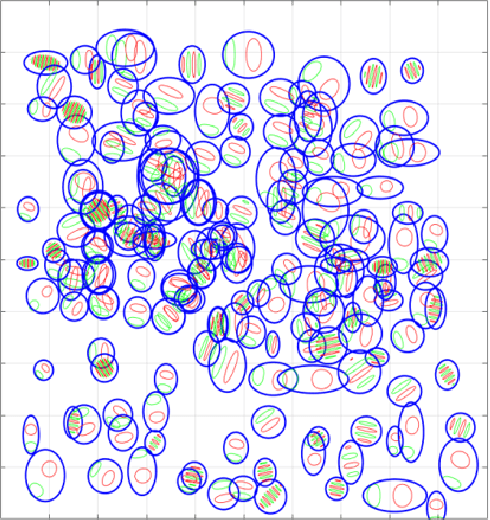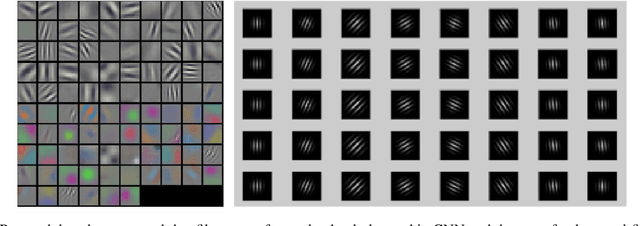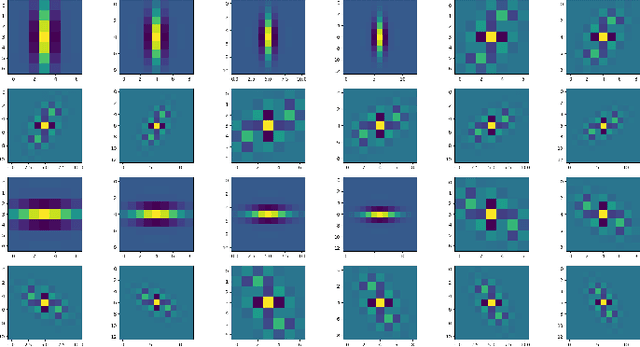Weiliang Chen
GenWorld: Towards Detecting AI-generated Real-world Simulation Videos
Jun 12, 2025Abstract:The flourishing of video generation technologies has endangered the credibility of real-world information and intensified the demand for AI-generated video detectors. Despite some progress, the lack of high-quality real-world datasets hinders the development of trustworthy detectors. In this paper, we propose GenWorld, a large-scale, high-quality, and real-world simulation dataset for AI-generated video detection. GenWorld features the following characteristics: (1) Real-world Simulation: GenWorld focuses on videos that replicate real-world scenarios, which have a significant impact due to their realism and potential influence; (2) High Quality: GenWorld employs multiple state-of-the-art video generation models to provide realistic and high-quality forged videos; (3) Cross-prompt Diversity: GenWorld includes videos generated from diverse generators and various prompt modalities (e.g., text, image, video), offering the potential to learn more generalizable forensic features. We analyze existing methods and find they fail to detect high-quality videos generated by world models (i.e., Cosmos), revealing potential drawbacks of ignoring real-world clues. To address this, we propose a simple yet effective model, SpannDetector, to leverage multi-view consistency as a strong criterion for real-world AI-generated video detection. Experiments show that our method achieves superior results, highlighting a promising direction for explainable AI-generated video detection based on physical plausibility. We believe that GenWorld will advance the field of AI-generated video detection. Project Page: https://chen-wl20.github.io/GenWorld
SceneCompleter: Dense 3D Scene Completion for Generative Novel View Synthesis
Jun 12, 2025Abstract:Generative models have gained significant attention in novel view synthesis (NVS) by alleviating the reliance on dense multi-view captures. However, existing methods typically fall into a conventional paradigm, where generative models first complete missing areas in 2D, followed by 3D recovery techniques to reconstruct the scene, which often results in overly smooth surfaces and distorted geometry, as generative models struggle to infer 3D structure solely from RGB data. In this paper, we propose SceneCompleter, a novel framework that achieves 3D-consistent generative novel view synthesis through dense 3D scene completion. SceneCompleter achieves both visual coherence and 3D-consistent generative scene completion through two key components: (1) a geometry-appearance dual-stream diffusion model that jointly synthesizes novel views in RGBD space; (2) a scene embedder that encodes a more holistic scene understanding from the reference image. By effectively fusing structural and textural information, our method demonstrates superior coherence and plausibility in generative novel view synthesis across diverse datasets. Project Page: https://chen-wl20.github.io/SceneCompleter
SpectralAR: Spectral Autoregressive Visual Generation
Jun 12, 2025Abstract:Autoregressive visual generation has garnered increasing attention due to its scalability and compatibility with other modalities compared with diffusion models. Most existing methods construct visual sequences as spatial patches for autoregressive generation. However, image patches are inherently parallel, contradicting the causal nature of autoregressive modeling. To address this, we propose a Spectral AutoRegressive (SpectralAR) visual generation framework, which realizes causality for visual sequences from the spectral perspective. Specifically, we first transform an image into ordered spectral tokens with Nested Spectral Tokenization, representing lower to higher frequency components. We then perform autoregressive generation in a coarse-to-fine manner with the sequences of spectral tokens. By considering different levels of detail in images, our SpectralAR achieves both sequence causality and token efficiency without bells and whistles. We conduct extensive experiments on ImageNet-1K for image reconstruction and autoregressive generation, and SpectralAR achieves 3.02 gFID with only 64 tokens and 310M parameters. Project page: https://huang-yh.github.io/spectralar/.
DreamCinema: Cinematic Transfer with Free Camera and 3D Character
Aug 22, 2024



Abstract:We are living in a flourishing era of digital media, where everyone has the potential to become a personal filmmaker. Current research on cinematic transfer empowers filmmakers to reproduce and manipulate the visual elements (e.g., cinematography and character behaviors) from classic shots. However, characters in the reimagined films still rely on manual crafting, which involves significant technical complexity and high costs, making it unattainable for ordinary users. Furthermore, their estimated cinematography lacks smoothness due to inadequate capturing of inter-frame motion and modeling of physical trajectories. Fortunately, the remarkable success of 2D and 3D AIGC has opened up the possibility of efficiently generating characters tailored to users' needs, diversifying cinematography. In this paper, we propose DreamCinema, a novel cinematic transfer framework that pioneers generative AI into the film production paradigm, aiming at facilitating user-friendly film creation. Specifically, we first extract cinematic elements (i.e., human and camera pose) and optimize the camera trajectory. Then, we apply a character generator to efficiently create 3D high-quality characters with a human structure prior. Finally, we develop a structure-guided motion transfer strategy to incorporate generated characters into film creation and transfer it via 3D graphics engines smoothly. Extensive experiments demonstrate the effectiveness of our method for creating high-quality films with free camera and 3D characters.
Reputation-Driven Asynchronous Federated Learning for Enhanced Trajectory Prediction with Blockchain
Jul 28, 2024Abstract:Federated learning combined with blockchain empowers secure data sharing in autonomous driving applications. Nevertheless, with the increasing granularity and complexity of vehicle-generated data, the lack of data quality audits raises concerns about multi-party mistrust in trajectory prediction tasks. In response, this paper proposes an asynchronous federated learning data sharing method based on an interpretable reputation quantization mechanism utilizing graph neural network tools. Data providers share data structures under differential privacy constraints to ensure security while reducing redundant data. We implement deep reinforcement learning to categorize vehicles by reputation level, which optimizes the aggregation efficiency of federated learning. Experimental results demonstrate that the proposed data sharing scheme not only reinforces the security of the trajectory prediction task but also enhances prediction accuracy.
Make-Your-3D: Fast and Consistent Subject-Driven 3D Content Generation
Mar 14, 2024Abstract:Recent years have witnessed the strong power of 3D generation models, which offer a new level of creative flexibility by allowing users to guide the 3D content generation process through a single image or natural language. However, it remains challenging for existing 3D generation methods to create subject-driven 3D content across diverse prompts. In this paper, we introduce a novel 3D customization method, dubbed Make-Your-3D that can personalize high-fidelity and consistent 3D content from only a single image of a subject with text description within 5 minutes. Our key insight is to harmonize the distributions of a multi-view diffusion model and an identity-specific 2D generative model, aligning them with the distribution of the desired 3D subject. Specifically, we design a co-evolution framework to reduce the variance of distributions, where each model undergoes a process of learning from the other through identity-aware optimization and subject-prior optimization, respectively. Extensive experiments demonstrate that our method can produce high-quality, consistent, and subject-specific 3D content with text-driven modifications that are unseen in subject image.
OccWorld: Learning a 3D Occupancy World Model for Autonomous Driving
Nov 27, 2023



Abstract:Understanding how the 3D scene evolves is vital for making decisions in autonomous driving. Most existing methods achieve this by predicting the movements of object boxes, which cannot capture more fine-grained scene information. In this paper, we explore a new framework of learning a world model, OccWorld, in the 3D Occupancy space to simultaneously predict the movement of the ego car and the evolution of the surrounding scenes. We propose to learn a world model based on 3D occupancy rather than 3D bounding boxes and segmentation maps for three reasons: 1) expressiveness. 3D occupancy can describe the more fine-grained 3D structure of the scene; 2) efficiency. 3D occupancy is more economical to obtain (e.g., from sparse LiDAR points). 3) versatility. 3D occupancy can adapt to both vision and LiDAR. To facilitate the modeling of the world evolution, we learn a reconstruction-based scene tokenizer on the 3D occupancy to obtain discrete scene tokens to describe the surrounding scenes. We then adopt a GPT-like spatial-temporal generative transformer to generate subsequent scene and ego tokens to decode the future occupancy and ego trajectory. Extensive experiments on the widely used nuScenes benchmark demonstrate the ability of OccWorld to effectively model the evolution of the driving scenes. OccWorld also produces competitive planning results without using instance and map supervision. Code: https://github.com/wzzheng/OccWorld.
Surgical tool classification and localization: results and methods from the MICCAI 2022 SurgToolLoc challenge
May 11, 2023



Abstract:The ability to automatically detect and track surgical instruments in endoscopic videos can enable transformational interventions. Assessing surgical performance and efficiency, identifying skilled tool use and choreography, and planning operational and logistical aspects of OR resources are just a few of the applications that could benefit. Unfortunately, obtaining the annotations needed to train machine learning models to identify and localize surgical tools is a difficult task. Annotating bounding boxes frame-by-frame is tedious and time-consuming, yet large amounts of data with a wide variety of surgical tools and surgeries must be captured for robust training. Moreover, ongoing annotator training is needed to stay up to date with surgical instrument innovation. In robotic-assisted surgery, however, potentially informative data like timestamps of instrument installation and removal can be programmatically harvested. The ability to rely on tool installation data alone would significantly reduce the workload to train robust tool-tracking models. With this motivation in mind we invited the surgical data science community to participate in the challenge, SurgToolLoc 2022. The goal was to leverage tool presence data as weak labels for machine learning models trained to detect tools and localize them in video frames with bounding boxes. We present the results of this challenge along with many of the team's efforts. We conclude by discussing these results in the broader context of machine learning and surgical data science. The training data used for this challenge consisting of 24,695 video clips with tool presence labels is also being released publicly and can be accessed at https://console.cloud.google.com/storage/browser/isi-surgtoolloc-2022.
The Brain-Inspired Decoder for Natural Visual Image Reconstruction
Jul 18, 2022



Abstract:Decoding images from brain activity has been a challenge. Owing to the development of deep learning, there are available tools to solve this problem. The decoded image, which aims to map neural spike trains to low-level visual features and high-level semantic information space. Recently, there are a few studies of decoding from spike trains, however, these studies pay less attention to the foundations of neuroscience and there are few studies that merged receptive field into visual image reconstruction. In this paper, we propose a deep learning neural network architecture with biological properties to reconstruct visual image from spike trains. As far as we know, we implemented a method that integrated receptive field property matrix into loss function at the first time. Our model is an end-to-end decoder from neural spike trains to images. We not only merged Gabor filter into auto-encoder which used to generate images but also proposed a loss function with receptive field properties. We evaluated our decoder on two datasets which contain macaque primary visual cortex neural spikes and salamander retina ganglion cells (RGCs) spikes. Our results show that our method can effectively combine receptive field features to reconstruct images, providing a new approach to visual reconstruction based on neural information.
 Add to Chrome
Add to Chrome Add to Firefox
Add to Firefox Add to Edge
Add to Edge